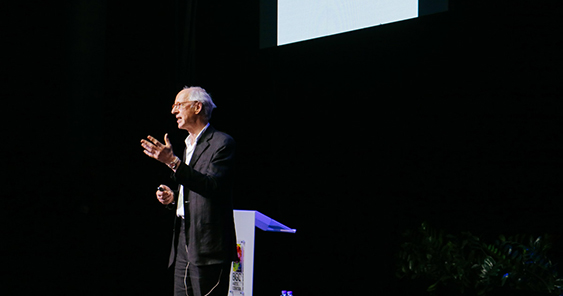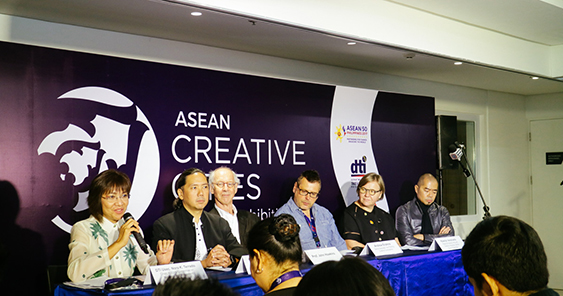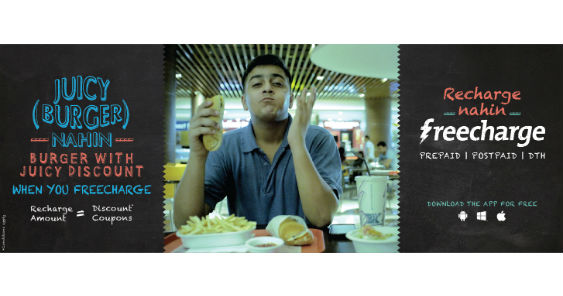by Paolo Mercado
As the 30th ASEAN Leaders Summit was underway in Manila, another conference was making waves in BGC. The Department of Trade & Industry organized the first ever ASEAN Creative Cities Forum & Exhibition at the BGC Arts Center on April 26-27. This thought leadership event highlighted the experience of ASEAN Creative Cities that use creativity to drive economic growth, income, and employment.
When Rhea Matute, Executive Director of the Design Center of the Philippines, informed me that she was appointed by DTI to organize this event, I strongly recommended that she invite Professor John Howkins whom I had connected with for my creative economy research work.
Prof. Howkins coined the term “Creative Economy” in his watershed 2002 book of the same name. Many international policies and scholarly articles cite John Howkins groundbreaking work as was the first to crystallize the concept of the creative economy based on his observations, research, and participation in the UK’s creative industries policy development from the mid 1990s to this day.
Unlike other academics and consultants, Prof. Howkins is a real practitioner and creative industry insider. His media career spans TV, film, digital media, publishing and consulting with companies including HBO, Time Warner, HandMade, & Hotbed Media. He is a former chairman of the London Film School and is a former Executive Director of the International Institute of Communications.
Since the publication of his two books (“The Creative Economy: How People Make Money from Ideas” & “Creative Ecology: Where Thinking is a Proper Job”), Prof. Howkins devotes himself full time to advocating the Gospel of Creative Economy & Creative Ecology through teaching, research and consulting with both private sector and governments. Although Prof. Howkins does a lot of consulting work in Asia, particularly China, the Philippines was not on his radar of “must watch” creative economies. He thus accepted the invitation of DTI with a strong desire to learn more about the Philippines’ creative economy & ecology.
John Howkins’ keynote address set the tone for the two day forum, enlightening, inspiring and challenging everyone in the room.Through very simple unembellished slides, Howkins not only summarized the key principles from his two books, but he also proposed some concrete action steps for the Philippines to embrace a creative economy policy.
EVERYONE IS CREATIVE
“Everyone is born with imagination and the passion to use it for private pleasures and public purposes. Being creative is just being normal.”
Unlike agricultural economies where wealth is determined by land, or industrial economies where wealth is determined by capital and the ownership of the means of production, the creative economy is the first economy based on people and their ability to create ideas that generate value.
For this creative potential to be unleashed, Howkins recommended for the Philippines to Issue a High Level Declaration that Creativity is a National Resource for Everyone.

Howkins cited the example of the UK government. In 1998, Tony Blair’s government declared Creativity as a priority for economic growth and cultural development. They put words into action by establishing the Creative Industries Task Force (under the Department of Media, Culture & Sports) which then mapped, measured and made the strategic growth plan for UK Creative Industries.
This declaration by Prime Minister Tony Blair legitimized the role of creative industries & occupations as contributing to personal well-being, national economic growth and social welfare. This declaration also boosted confidence for creative people, and parents of young students to pursue creativity as a proper job. It also boosted the confidence of both national and local politicians to support policies and programs that encouraged creative industries to grow. John Howkins urged the DTI to help move the Philippine Government to make a similar declaration “at the highest possible level of government”.

CREATIVITY NEEDS FREEDOM
“We want to be free to manage our relationship to ideas. Freedom to say yes, say no, express, explore, discover, question, follow, interpret, control, reject, twist, hype, produce, package, perform, frame, borrow, copy, steal, develop, research, test, test again, know, share, exchange, prototype, promote, sell, buy Ideas.”
Freedom to Learn was central to Howkins’ advice. He emphasized that while everyone is born with the raw material of creativity, this creativity needs freedom to be expressed beyond the early years. He made special mention of the Philippine Kindergarten Education Law which states: “Young Learners should be encouraged to create & discover, and become willing risk-takers.” He encouraged the Philippines to adopt this principle not just for pre-school but for all education.
Beyond freedom of expression, creativity requires technical training, and opportunities for practice, practice, practice. Thus Howkins recommended expanding the opportunities for specialist creative education programs that provide both technical instruction and practice opportunity. These opportunities to learn should be within and beyond the formal educational system and be made available to anyone with the desire to learn and improve their creative potential.
FREEDOM NEEDS MARKETS
While the above two principles encourage creativity on an individual basis, a Creative Economy is an eco-system of assets, industries, markets, transactions, places and support systems that together make creativity thrive.
The core creative sectors/markets are art, design, entertainment, media, innovation. These industries require an ecology of specialist and support communities, creative spaces, education, policy and systems to generate value.
Howkins strongly recommended the development of specialist business management and leadership programs devoted to creative industries. He also encouraged creative industries to learn not only about “making” new things, but also to learn about “selling” and “retailing” creativity. Some industries, such as Advertising, are very good at selling their clients’ brands and also their own brands. Other industries however, are not as skilled. Howkins also advocated establishing creative hubs that go beyond offering shared spaces, but also offer creative shared services such as IP advice centers, and copyright exchanges.
THE CORE FOUR
Howkins summarized his keynote with four simple words: Change & Diversity, Learning & Adaptation. These four elements are the core elements of a thriving creative ecology. Policies, systems, places, and people that encourage these four elements will likely grow the creative economy, and those that work against them will discourage a creative economy.
THE START OF A JOURNEY
With two days of intensive discussion and learning, not only were the participants inspired to start building their own creative agenda for their communities, but John Howkins himself was very impressed and inspired by the hidden gem of creativity that he saw in the Philippines and was very positive that with support, guidance, and commitment, the Philippines can become a significant creative economy on the international stage.
This is then just the beginning of our creative economy journey. A beginning that was made possible by DTI Secretary Mon Lopez, Usec. Nora Terrado, as well as Rhea Matute, Executive Director of the Design Center of the Philippines, through their efforts in organizing this Forum, but also in their continued support of creative industries through events such as Manila FAME and Creative Marketplace.

About the Author: Paolo Mercado is the Head of Marketing, Communication & Innovation at Nestle Philippines. He is also the founder of the Creative Economy Development Council of the Philippines, a private sector think tank with representatives from the Philippines Creative Industries, dedicated to helping grow our creative economy through research, policy advocacy, as well as teaching, coaching & consultancy for creative industries.









